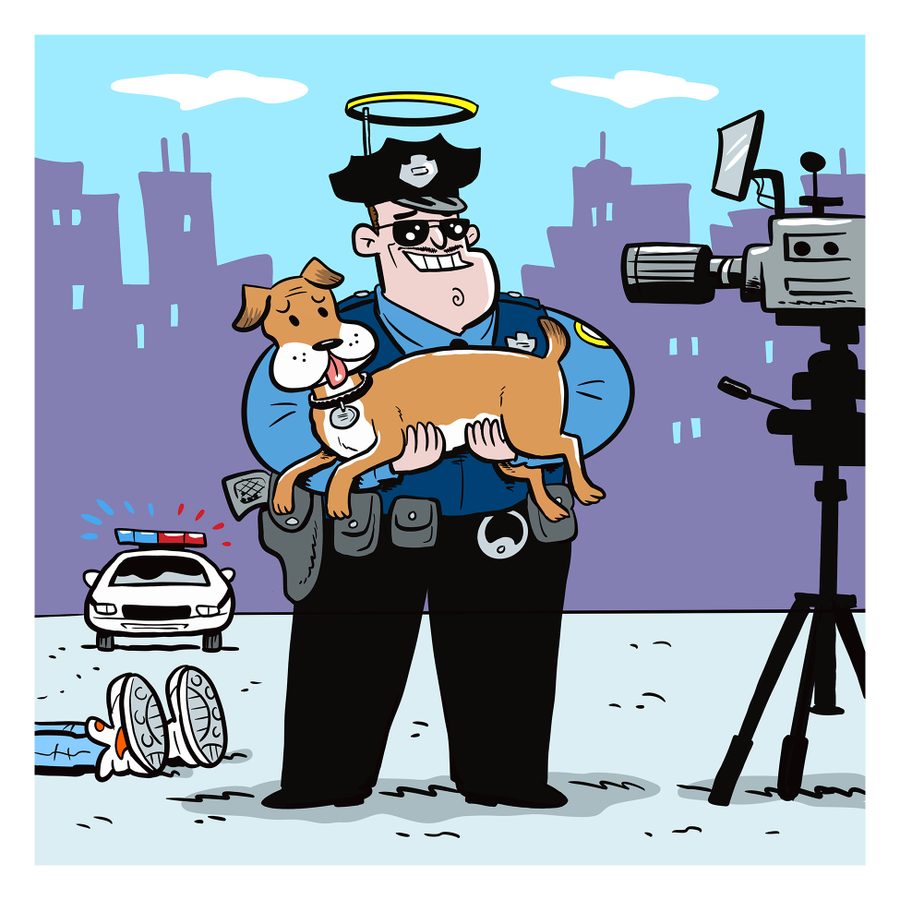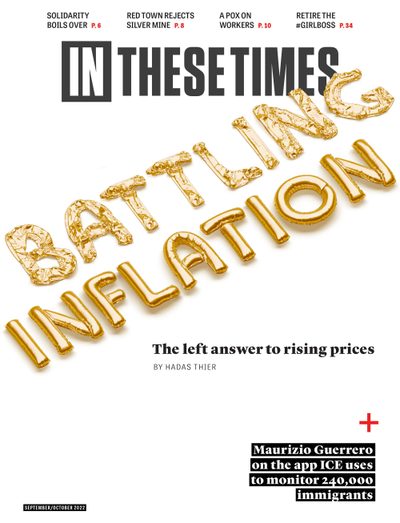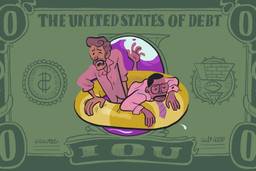Beware the Copaganda Machine
Media portrayals of police as good-hearted heroes warp our collective view of reality. Don’t trust them.
In These Times Editors

cop • a • ganda
noun
1. The Pollyanna-ish portrayal of law enforcement in pop culture
“I would sooner get stabbed again than have someone make a podcast about me.” —Writer Emma Berquist, who survived a violent (and vanishingly rare) attack by a stranger while walking her dog.
Why are you trying to ruin my favorite true-crime podcasts?
We’re not, we swear! Copaganda is so pervasive it’s almost impossible to avoid. We won’t begrudge anyone the enjoyment of solving puzzles while watching Mare of Easttown or listening to the hosts of My Favorite Murder— whatever floats your boat. But it’s important to consider the sum effect this genre has on our collective view of reality — namely, that it warps it almost unrecognizably, framing everyday people as potential threats and police as the only real remedy.
What exactly does copaganda get wrong?
If you watch enough “true crime,” you might be convinced that murderers and home invasions are everywhere, and the victims are almost always young, white women. In reality, rates of violent crime are less than half of what they were 30 years ago, and the actual leading causes of death in this country are heart disease and cancer. Plus, murder victims are disproportionately men of color.
Meanwhile, tax evasion by the rich amounts to an annual trillion-dollar crime, more than 1,500 times the magnitude of all reported robberies in the United States. And employers steal an estimated annual $50 billion from workers through wage theft.
Then there’s what actually happens during most police investigations; the police clearance rate for homicides is at an all time low, with about half of U.S. murders going unsolved. There’s also a staggering rate of wrongful convictions — studies suggest 6% of state prisoners and 4% of people on death row are innocent — and a prison system that’s totally incompatible with rehabilitation or restorative justice.
Perhaps the biggest thing copaganda gets wrong is the underlying cause of crime, and what we don’t do about it as a society — such as put real resources into tackling systemic inequality, racialized disinvestment and cycles of trauma.
OK. So why is copaganda so prevalent?
Pop-culture portrayals aside, we can point the finger at one group that should know better: the media.
Police departments have their own PR machines that can pitch reporters on positive stories about cops, and it’s still standard practice for crime reporters to simply run with official police narratives.
That’s why we desperately need media to question the conventional wisdom about crime and uplift real solutions for a safer, healthier society.
This is part of “The Big Idea,” a monthly series offering brief introductions to progressive theories, policies, tools and strategies that can help us envision a world beyond capitalism. For recent In These Times coverage of copaganda, see Teens Work, Drive and Pay Taxes. They Should Be Able To Vote, Too, If You Like the Idea of a 4-Day Workweek, You’ll Love the 5-Hour Workday, and Community Care Over Self-Care.








